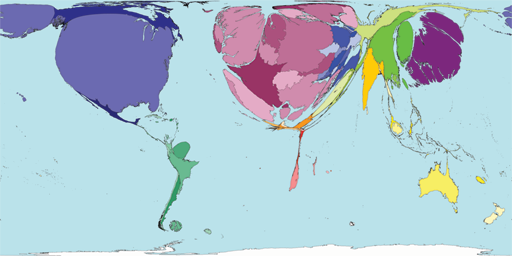I've recently been going through much of the politically incorrect Greg Cochran's site. Here is some stuff of interest:
How doctors are not good at spotting anomalies and thus in spotting potential scientific breakthroughs. This means that there must be potential "low hanging fruit" if we look.
I would also add that the regulatory burden on medicines is so heavy that it must be holding back or indeed preventing research in new medicines. This is to prevent horrors like thalidomide but, at about £1 billion just to get a new medicine accepted, I am certain a cost benefit analysis would show lives saved by not having thalidomide would be a fraction of those lost by not having hundreds of useful medicines.
I would suggest that restrictions on testing should be entirely lifted for subjects of 60 or over and that medicines not tested up to government level should be available, clearly labelled as such, I suspect that other institutions would spring up willing to test more cheaply & quickly than government and that companies would be happy to put them on the label.
Specifically any successful medicine against Alzheimers (there are a number of candidates) will not be available for at least 10 years and I am certain a lot of people, seeing early onset, would risk it.
-----------------------------------------------------
we were discussing per-pupil expenditure by state in primary and secondary education. Utah is famous for having the lowest per-pupil funding in the country. We are right next to and similar in many ways to Wyoming, which has one of the highest funding levels in the country. The dollars per student are $7,200 in Utah and $18,000 in Wyoming according to this
source. Caution is always in order, of course, but these numbers are in broad agreement with other sources and other years.
What does Wyoming get for the extra $11,000 per student? A quick assay is to look at NAEP scores. Here are eighth grade math scores for white students over the last two decades:

A quick look shows that Wyoming is getting nothing at all for their extra $11,000
So spending has between little or nothing to do with success. This, incidentally, explains how Habits of Highly Successful Countries could find there was no correlation between education budgets and economic success.
------------------------------------------------------------
The standard belief in the academy is that there are no such personality differences between ethnic groups and races. It’s not that they have some kind of argument based on genetics and selection and prehistory that makes such differences super-unlikely: no, it can’t be true because it would hurt their feelings.
You know, the people populating the social sciences are bound to be right about something, eventually.
This is why he is politically incorrect.
----------------------------------------------------
One fairly obvious, little-discussed variety of low-hanging technological fruit are those ideas and devices that are already known – to but a few. Secrets.
Sometimes important secrets are deliberately kept for a long time. Consider the Chamberlen family.
Peter Chamberlen the elder [1560-1631] was the son of a Huguenot surgeon who had left France in 1576. He invented obstetric forceps , a surgical instrument similar to a pair of tongs, useful in extracting the baby in a difficult birth. He, his brother, and his brother’s descendants preserved and prospered from their private technology for 125 years.
Sometimes the future is already here, but not generally known. Sometimes it’s hidden, sometimes it’s forgotten, sometimes it’s in Latin. There have to be better ways of finding and disseminating those secrets.
I have discussed this and the Chamberlens before. I put up this comment.
This is a strong argument for either watertight patent laws, which I don’t think is possible, or a significant part of gdp going to technology prizes.
I've read that 3rd parties get 3 times as much value from inventions as the inventors do which means prizes should be about 3 times the value obtained by patents. This is difficult to estimate but looks like at least 6% of gdp.
You may be interested in
http://a-place-to-stand.blogspot.co.uk/2013/01/did-patents-create-step-change-in.html
-----------------------------------------------------
 Most people think that science and math and engineering are found everywhere, like soccer
Most people think that science and math and engineering are found everywhere, like soccer, but actually, they are regional practices, more like hurling or tossing the caber. In the map, countries are resized according to the number of scientific papers they produce. Population size plays a role, but average productivity matters more. Note that Singapore, with a population of 5 million, looks bigger than Indonesia, with 240 million people.


